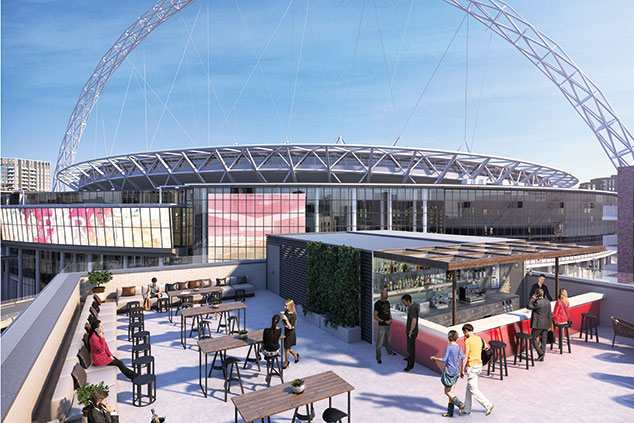
Professional landlord Tipi is urging people to “join the rental rebellion”. Its Soviet-style advert shows a clenched fist holding a key, and the tagline boasts that it is “throwing the rental rule-book out of the window and making renting better for everyone”. Its competitors have similarly utopian slogans. Get Living offers people “a new way of renting”, while Fizzy promises that it is “reinventing renting” with “zero faff”.
These companies are part of the fast-growing build-to-rent sector in the UK, where corporate landlords, often institutional investors, rent out flats in purpose-built towers. These flats are a cut above your typical grotty flatshare: they often come with access to posh gyms, cinemas and additional security. The build-to-rent model is already very popular in the US, but until recently it had been slow to take off in the UK.
The build-to-rent trend crosses the Atlantic
At the end of March there were more than 30,000 completed build-to-rent properties in the UK, according to estate agent Savills. This is an increase of 34% on the same time last year. When you include properties under construction or in planning, the total number of build-to-rent homes increases to 140,000, with the average scheme in planning comprising more than 320 flats.
There are several reasons why build-to-rent is becoming more popular in the UK. Clearly there is a shortage of affordable housing, whether for people to buy or rent, with housebuilding not keeping up with demand. In an effort to level the playing field between landlords and private buyers, the government cracked down on the buy-to-let sector, making it increasingly difficult for landlords to make money from it. As a result, landlords have left the sector in droves, further reducing the supply of rental properties (the number of landlords has fallen by 120,000 in the past three years, according to estate agent Hamptons International).
Yet, over the past ten years the number of rental households has increased by 74% to 4.7 million. So American-style corporate landlords are entering a market with healthy demand – either from people who might have accepted they’re not in a position to buy property, or who don’t want the commitment of home ownership but will pay for a slick rental flat in a fancy block. And it is a lucrative business. On average, the rent on build-to-rent flats is 11% higher than surrounding rented homes, according to an analysis of 25 rental schemes by real-estate services firm JLL. And investment in this sector is going mainstream. For example, investment bank Goldman Sachs recently made its first foray into build-to-rent, putting £184m into what is set to be Birmingham’s largest residential tower. By 2025, investors will have allocated £75bn to the professionally managed private-rented sector, says estate agent Knight Frank.
One way to invest in the build-to-rent trend is through Grainger (LSE: GRI). Grainger is the UK’s largest private landlord with 8,237 units in cities such as Manchester, Birmingham and London. In April it signed a deal with Transport for London to build 3,000 properties above and around Underground stations. Between 2017 and 2018, the group’s earnings grew by 26% to £94m, partly driven by like-for-like rental growth of 4%. Grainger’s shares currently trade at a discount of around 20% to net asset value.